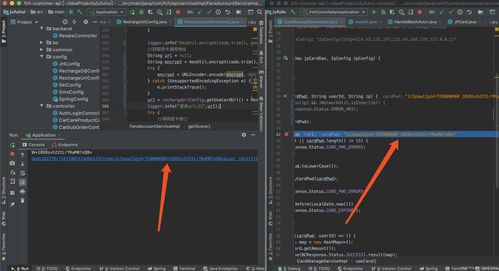小波变换c源代码(小波变换程序)
admin 发布:2022-12-19 04:39 89
今天给各位分享小波变换c源代码的知识,其中也会对小波变换程序进行解释,如果能碰巧解决你现在面临的问题,别忘了关注本站,现在开始吧!
本文目录一览:
C语言怎么实现小波变换
#include stdio.h
#include stdlib.h
#define LENGTH 512//信号长度
/******************************************************************
* 一维卷积函数
*
* 说明: 循环卷积,卷积结果的长度与输入信号的长度相同
*
* 输入参数: data[],输入信号; core[],卷积核; cov[],卷积结果;
* n,输入信号长度; m,卷积核长度.
*
* 李承宇, lichengyu2345@126.com
*
* 2010-08-18
******************************************************************/
void Covlution(double data[], double core[], double cov[], int n, int m)
{
int i = 0;
int j = 0;
int k = 0;
//将cov[]清零
for(i = 0; i n; i++)
{
cov[i] = 0;
}
//前m/2+1行
i = 0;
for(j = 0; j m/2; j++, i++)
{
for(k = m/2-j; k m; k++ )
{
cov[i] += data[k-(m/2-j)] * core[k];//k针对core[k]
}
for(k = n-m/2+j; k n; k++ )
{
cov[i] += data[k] * core[k-(n-m/2+j)];//k针对data[k]
}
}
//中间的n-m行
for( i = m/2; i = (n-m)+m/2; i++)
{
for( j = 0; j m; j++)
{
cov[i] += data[i-m/2+j] * core[j];
}
}
//最后m/2-1行
i = (n - m) + m/2 + 1;
for(j = 1; j m/2; j++, i++)
{
for(k = 0; k j; k++)
{
cov[i] += data[k] * core[m-j-k];//k针对data[k]
}
for(k = 0; k m-j; k++)
{
cov[i] += core[k] * data[n-(m-j)+k];//k针对core[k]
}
}
}
/******************************************************************
* 一维小波变换函数
*
* 说明: 一维小波变换,只变换一次
*
* 输入参数: input[],输入信号; output[],小波变换结果,包括尺度系数和
* 小波系数两部分; temp[],存放中间结果;h[],Daubechies小波基低通滤波器系数;
* g[],Daubechies小波基高通滤波器系数;n,输入信号长度; m,Daubechies小波基紧支集长度.
*
* 李承宇, lichengyu2345@126.com
*
* 2010-08-19
******************************************************************/
void DWT1D(double input[], double output[], double temp[], double h[],
double g[], int n, int m)
{
// double temp[LENGTH] = {0};//?????????????
int i = 0;
/*
//尺度系数和小波系数放在一起
Covlution(input, h, temp, n, m);
for(i = 0; i n; i += 2)
{
output[i] = temp[i];
}
Covlution(input, g, temp, n, m);
for(i = 1; i n; i += 2)
{
output[i] = temp[i];
}
*/
//尺度系数和小波系数分开
Covlution(input, h, temp, n, m);
for(i = 0; i n; i += 2)
{
output[i/2] = temp[i];//尺度系数
}
Covlution(input, g, temp, n, m);
for(i = 1; i n; i += 2)
{
output[n/2+i/2] = temp[i];//小波系数
}
}
void main()
{
double data[LENGTH];//输入信号
double temp[LENGTH];//中间结果
double data_output[LENGTH];//一维小波变换后的结果
int n = 0;//输入信号长度
int m = 6;//Daubechies正交小波基长度
int i = 0;
char s[32];//从txt文件中读取一行数据
static double h[] = {.332670552950, .806891509311, .459877502118, -.135011020010,
-.085441273882, .035226291882};
static double g[] = {.035226291882, .085441273882, -.135011020010, -.459877502118,
.806891509311, -.332670552950};
//读取输入信号
FILE *fp;
fp=fopen("data.txt","r");
if(fp==NULL) //如果读取失败
{
printf("错误!找不到要读取的文件/"data.txt/"/n");
exit(1);//中止程序
}
while( fgets(s, 32, fp) != NULL )//读取长度n要设置得长一点,要保证读到回车符,这样指针才会定位到下一行?回车符返回的是零值?是,非数字字符经过atoi变换都应该返回零值
{
// fscanf(fp,"%d", data[count]);//一定要有""啊!!!最后读了个回车符!适应能力不如atoi啊
data[n] = atof(s);
n++;
}
//一维小波变换
DWT1D(data, data_output, temp, h, g, n, m);
//一维小波变换后的结果写入txt文件
fp=fopen("data_output.txt","w");
//打印一维小波变换后的结果
for(i = 0; i n; i++)
{
printf("%f/n", data_output[i]);
fprintf(fp,"%f/n", data_output[i]);
}
//关闭文件
fclose(fp);
}
有关C语言运行小波变换程序的时间问题。
我只听闻小波技术,从未试过哈,只做过傅里叶变换而已。。。但是,你可以分析下你输出的数据,正确与否,就用matlab的输出和C执行器的输出对比下,就知道靠不靠谱了啊。
如果嫌数据太多,可以找一些对比分析软件,如果实在无法全部分析,就弄几个特殊点,让程序就在那一些点输出对应值,对比matlab和C执行器的输出,多次换点,再对比,就知道靠不靠谱了。。。。你只是通过运算时间,怎么知道靠不靠谱呢,呵呵,要是你用多核DSP来算,只是一瞬间的事情,岂不是更不靠谱了。

要对图像进行小波变换去噪,可以用哪些图像处理库(C/C++)?
1.最简单的方法:
public static String reverse1(String str)
{
return new StringBuffer(str).reverse().toString();
}
2.最常用的方法:
public static String reverse3(String s)
{
char[] array = s.toCharArray();
String reverse = ""; //注意这是空串,不是null
for (int i = array.length - 1; i = 0; i--)
reverse += array[i];
return reverse;
}
3.常用方法的变形:
public static String reverse2(String s)
{
int length = s.length();
String reverse = ""; //注意这是空串,不是null
for (int i = 0; i length; i++)
reverse = s.charAt(i) + reverse;//在字符串前面连接, 而非常见的后面
return reverse;
}
4.C语言中常用的方法:
public static String reverse5(String orig)
{
char[] s = orig.toCharArray();
int n = s.length - 1;
int halfLength = n / 2;
for (int i = 0; i = halfLength; i++) {
char temp = s[i];
s[i] = s[n - i];
s[n - i] = temp;
}
return new String(s); //知道 char数组和String相互转化
}
求小波变换图像降噪的matlab代码
%源代码来自于在《MATLAB环境下基于小波变换的图像去噪》刘智clear;clc % 清理工作空间
load wbarb; % 装载原始图像
subplot(221); % 新建窗口
image(X); % 显示图像
colormap(map); % 设置色彩索引图
title('原始图像'); % 设置图像标题
axis square; % 设置显示比例,生成含噪图像并图示
init=2055615866; % 初始值
randn('seed',init); % 随机值
XX=X+8*randn(size(X)); % 添加随机噪声
subplot(222); % 新建窗口
image(XX); % 显示图像
colormap(map); % 设置色彩索引图
title('含噪图像'); % 设置图像标题
axis square; %用小波函数coif2 对图像XX 进行2 层分解
[c,l]=wavedec2(XX,2,'coif2'); % 分解
n=[1,2]; % 设置尺度向量
p=[10.28,24.08]; % 设置阈值向量,对高频小波系数进行阈值处理
%nc=wthcoef2('h',c,l,n,p,'s');
%nc=wthcoef2('v',c,l,n,p,'s');
nc=wthcoef2('d',c,l,n,p,'s');
X1=waverec2(nc,l,'coif2'); % 图像的二维小波重构
subplot(223); % 新建窗口
image(X1); % 显示图像
colormap(map); %设置色彩索引图
title('第一次消噪后的图像'); % 设置图像标题
axis square; % 设置显示比例,再次对高频小波系数进行阈值处理
%mc=wthcoef2('h',nc,l,n,p,'s');mc=wthcoef2('v',nc,l,n,p,'s');
mc=wthcoef2('d',nc,l,n,p,'s');
X2=waverec2(mc,l,'coif2'); % 图像的二维小波重构
subplot(224); % 新建窗口
image(X2); % 显示图像
colormap(map); % 设置色彩索引图
title('第二次消噪后的图像'); % 设置图像标题
axis square; % 设置显示比例
小波变换c源代码的介绍就聊到这里吧,感谢你花时间阅读本站内容,更多关于小波变换程序、小波变换c源代码的信息别忘了在本站进行查找喔。
版权说明:如非注明,本站文章均为 AH站长 原创,转载请注明出处和附带本文链接;
- 上一篇:手机网页搜索框代码(手机网页搜索框代码在哪)
- 下一篇:关于教师登录系统代码的信息
相关推荐
- 05-07pb超级报表源代码(pb报表工具)[20240507更新]
- 05-07简历源代码可以上传照片的简单介绍[20240507更新]
- 05-07广告切换源代码免费下载(广告切换源代码免费下载安装)[20240507更新]
- 05-06阁楼网源代码(阁楼是什么网站)[20240506更新]
- 05-06源代码管理资源管理器(资源管理器运行代码)[20240506更新]
- 05-06代码源软件库(程序代码库)[20240506更新]
- 05-06人脸识别源代码pdf的简单介绍[20240506更新]
- 05-06包含超市管理系统java源代码的词条[20240506更新]
- 05-06商城app源代码免费(商城App源码)[20240506更新]
- 05-06包含游戏源代码不同的模式的词条[20240506更新]
取消回复欢迎 你 发表评论:
- 标签列表
- 最近发表
- 友情链接


